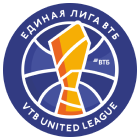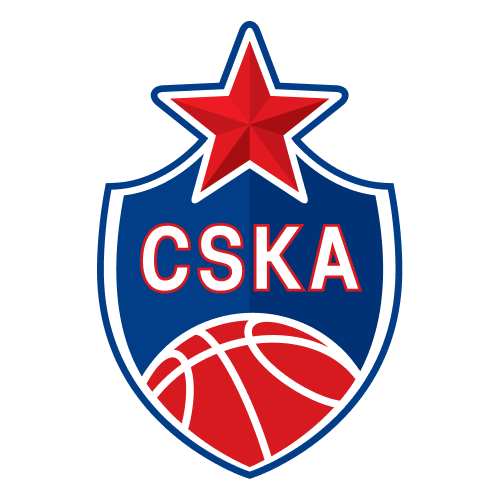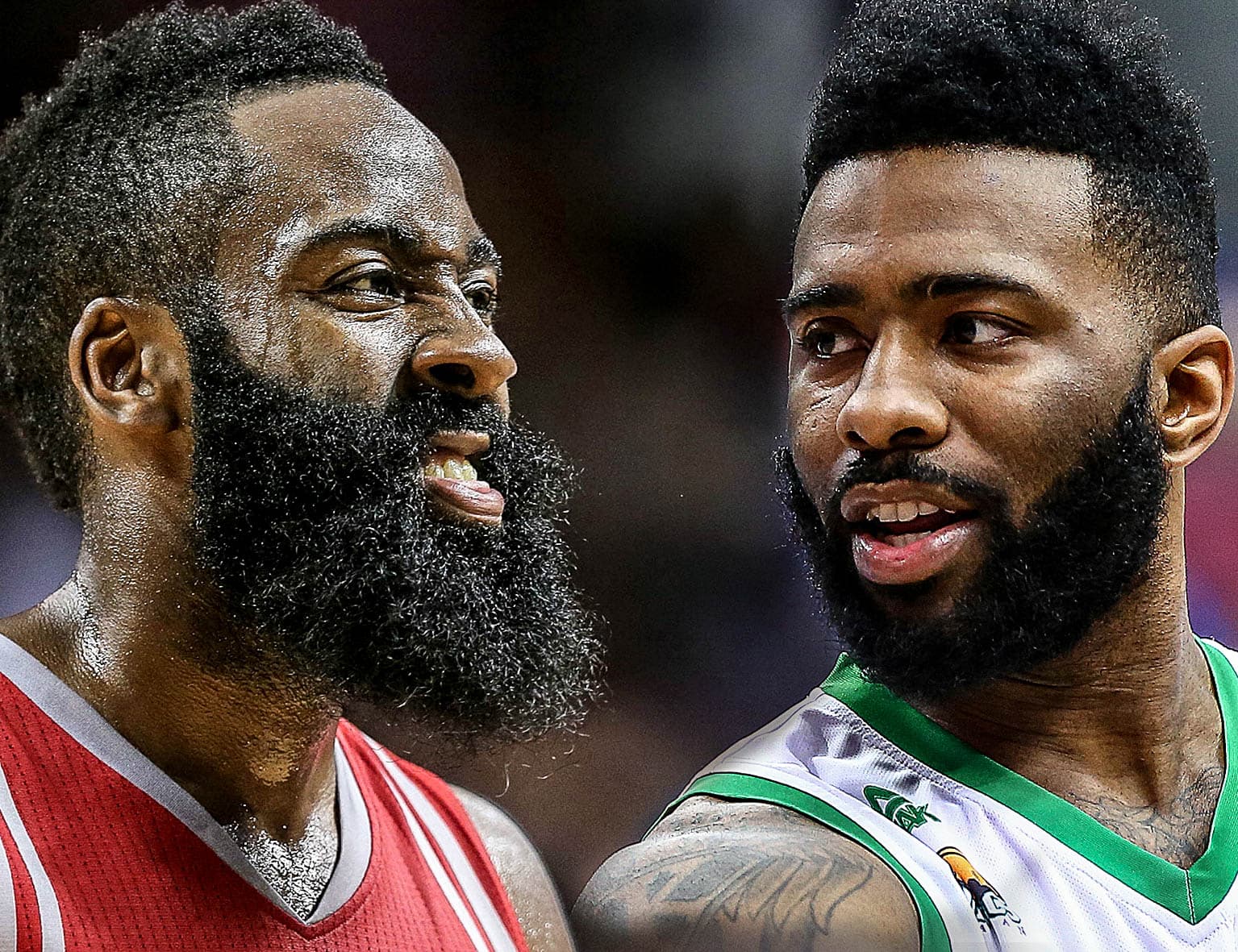So often, talking about basketball players turns into a comparison game: “What do you think? Could Anthony Randolph be the next Kevin Garnett?” Drawing comparisons, no matter how absurd, has always been popular with basketball fans. That’s why I thought it would be interesting to take several United League stars and match them up with former and current NBA players. These are only relative (!) comparisons, not grounded in high-level analysis (which wouldn’t really apply in this context), but rather my personal perception of these players.
Alexey Shved – Tracy McGrady

These two have one superficial trait in common: facial expressions. T-Mac always looked ready for a nap, just like Shved’s expressionless face was plastered on NBA memes for a time. But the comparisons don’t end with their poker faces and #1 on the jersey. Shved, like McGrady in the NBA, has a reputation for easing into games, before suddenly launching a flurry of 3-pointers, driving to the basket, maybe throwing down a poster dunk to put his team in control, then settling down again. He’s never matched McGrady’s legendary 13 points in 35 seconds, but he did win a championship with CSKA, whereas McGrady never got a ring and struggled to get out of the first round–his brief 2013 playoff run with San Antonio excepted.
Quino Colom – Jason Kidd

Why do people like the Terminator or secret agents like Jason Bourne or Jack Bauer? Because they always know what to do in crisis. In that sense, Kidd was a terminator on the court, blessed with a powerful internal processor that allowed him to think several steps beyond everyone else. Despite a relative lack of athleticism and size, Kidd earned his nickname Mr. Triple-Double for his ability to know where the ball would end up. Papaloukas also has a few things in common with Kidd, but he was a little too elegant on the court, unlike Kidd, who took a brutally rational approach to every possession.
Colom is a direct successor to the current Bucks coach’s style of play. Even though triple-doubles in European basketball are about as rare as quadruple-doubles in the NBA, Colom has already picked up a few. Stats, of course, only tell part of the story (try telling that to adherents of the Church of Triple-Double Westbrook). Both Colom and Kidd give off the impression of steel-framed, perfectly rational cyborgs, who will always be in the right place at the right time.
Keith Langford – James Harden

I’ll be honest: This is why I decided to write this piece in the first place. Two unbelievably talented lefties, who gather strength from bushy, striking beards. Both Harden and Langford have terrorized opponents with dangerous step-backs, proving to everyone that they have what it takes to hit shots with the game on the line. Even so, plenty of VTB United League fans complain that Langford tries to do too much at UNICS and expects to attack on every possession.
In Houston, meanwhile, there’s an entire system in place for Harden. The front office built the team around him and hasn’t wavered. Perhaps Kazan will pick up on the strategy and bring in a few elite snipers to complement Langford, ushering in a new era in the VTB League. Can you imagine?
Sergey Karasev – Chandler Parsons

Karasev once traveled to America as Russia’s great basketball hope. Parsons, on the other hand, entered the NBA with little fanfare (drafted 38th in 2011, which was considered a weak draft at the time), but he fit perfectly in the Rockets system, eventually earning an astonishing $94 million contract. Karasev can’t match that contract, but he is making good money… though that’s not his only similarity to Parsons
Both have been slowed by injuries. Though Karasev seems to be healthy now, Parsons has a longer road ahead of him. (This is the part of the text where we should mention their popularity with female fans, which we’ll probably skip… although, maybe not. What’s there to be embarrassed of?)
Kyle Hines – Ben Wallace

We could have compared Hines and Chuck Hayes: both are the same height as a typical shooting guard, work incredibly hard, have similar last names, etc. But Hayes’ unconventional free-throw form makes him a poor comparison with anyone. Luckily, we’ve got an even better comparison: The charismatic Ben Wallace, who shattered conventional thinking about undersized big men in the NBA. Wallace put headbands on his biceps to intimidate opponents, then took the court and destroyed centers that had half a foot or more on him. Hines, with his wrestler’s body, does his best to duplicate Wallace’s style of play in Europe.
Milos Teodosic – Pete Maravich

I’ll be honest, I didn’t want to go here. I figured it would be safer to stick with someone like White Chocolate. But Teodosic, despite my love for Jason Williams, is in a different category, certainly when it comes to European basketball.
At least with Maravich, Earl “Pearl” Monroe was a decent comparison at the time. Teodosic, on the other hand, has no equals in Europe today (perhaps Jasikavicius in the past). You could argue that Milos plays too much with his head, whereas the legendary Pistol Pete always went with his heart, but when you look at their haircuts, everything becomes clear. The only surprise is that no one has invented a legendary nickname yet for Teodosic. His style of play has some things in common with Massive Attack’s song Teardrop: languid, fluid on a hazy summer day and utterly magical.
Ryan Toolson – J.J. Reddick

If a team wants to contend for a championship, you need someone who can come off a screen and knock down 3-pointers. Toolson and Reddick can both do that and they even look alike. The U.S. Army has categories of sharpshooters and marksmen, soldiers with average rifles that are expected to do the best they can. The real snipers–tough-as-nails guys that crawl through the forest in camouflage and 16x zoom–might better be compared to someone like MVP Steph Curry. There aren’t many of them. But being able to hold your line and display bravery in tough moments often falls to sharpshooters like Reddick and Toolson. That’s their job: a quick cut, screen, and basket. Ok, sign here, you’re free to go fishing with a clean conscience.
Artsiom Parakhouski – old school centers
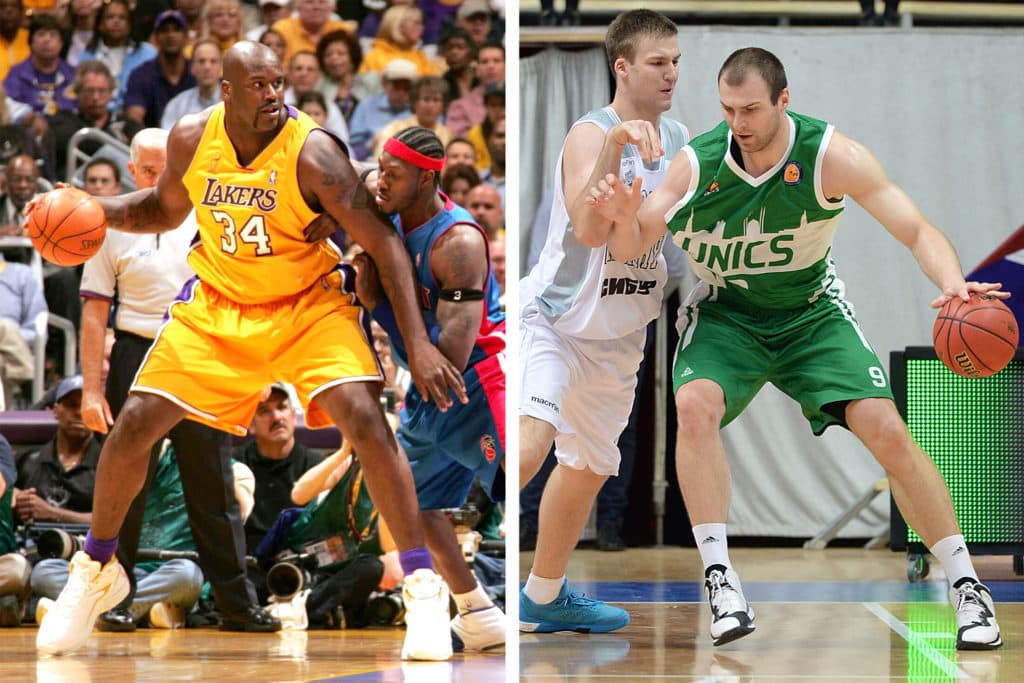
For someone who loved basketball in the 90s, the Belarusian titan’s style of play is beautiful to see. In the terrifying modern era, a center’s greatest attribute is being able to defend, then knock down a 3-pointer on the perimeter or free up the lane for someone like Mike Conley to drive to the basket. Parakhouski, though, is a carbon copy from the golden age of centers. No, he doesn’t have 439 different moves in the paint like Robinson or Olajuwon, but who needs them given his strength? Showing the ability to pull down a rebound, scatter three defenders and dunk on a fourth: that becomes more and more rare with each passing day. And don’t dare say old-school basketball was just a bunch of big guys pushing and shoving under the basket!
Coty Clarke – Draymond Green
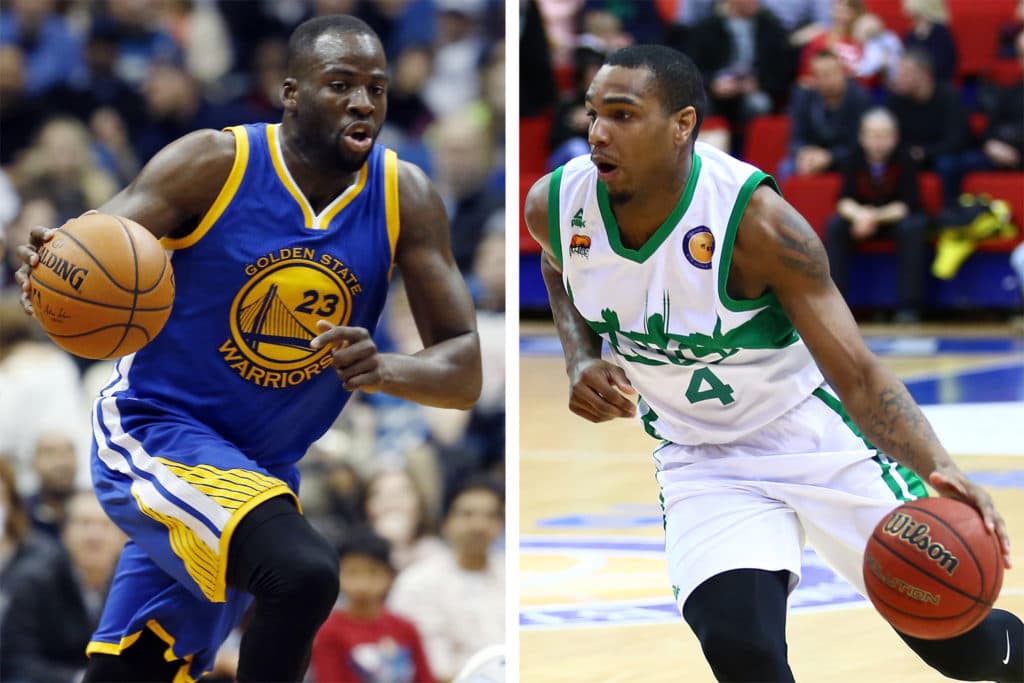
It’s tough to recall who first made the analogy, but now you struggle to read anything about UNICS that doesn’t mention “Kazan’s Draymond Green.” In general, it makes sense. Draymond Green is the ultimate glue guy. Coty Clarke, though he’s certainly not there yet, does have one important advantage (especially from an opponent’s perspective): he hasn’t once used his legs Draymond-style to wreak havoc. They do have something else in common on the court: once UNICS lost the fundamentally sound Clarke to injury, the team’s performance noticeably declined and has yet to fully recover. Now imagine Golden State without its primary engine…
Nando De Colo – Sarunas Marciulionis
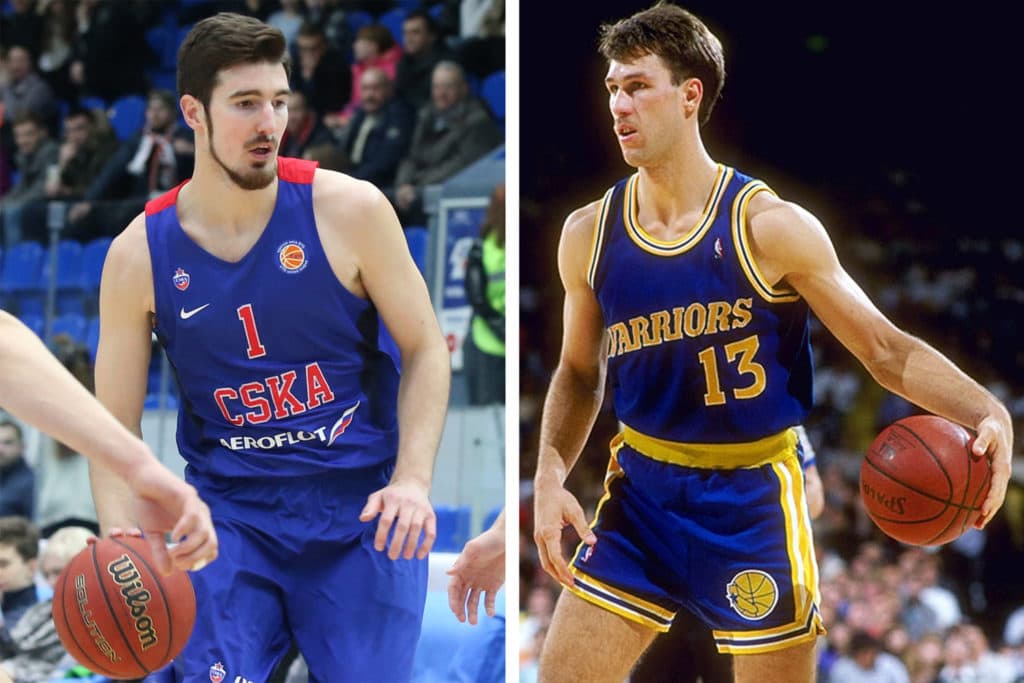
Marcela, as his teammates on the USSR national team called him, was always from a different planet, even on that legendary team of the 1980s. A freakish athlete, he even had a somewhat reasonable haircut in the era of mullets and big hair. De Colo evokes similar comparisons, though he’s gone even further (yes, he has an even shorter haircut, but he’s also quite unconventional for European basketball). Marciulionis’s greatest attribute was not his athleticism, however, but his ingenuity and deceptiveness on the court, which is why Don Nelson loved him son much. Those were essential attributes for anyone playing Nellyball. De Colo is also very good in these components, not surprisingly, after spending so many years with Popovich.
Notwithstanding his athleticism, Nando is a basketball aristocrat: “Monsieur, you allowed yourself to bump me. Could you explain what might be the cause?” Marciulionis, of course, was the more charismatic storyteller, but that shouldn’t come as a surprise given the extreme passion in the game those days and fodder for good stories.
Janis Timma – LeBron James
Fine, Timma is a very, very good, but this is going too far. Let’s do this instead:
Janis Timma – Toni Kukoc
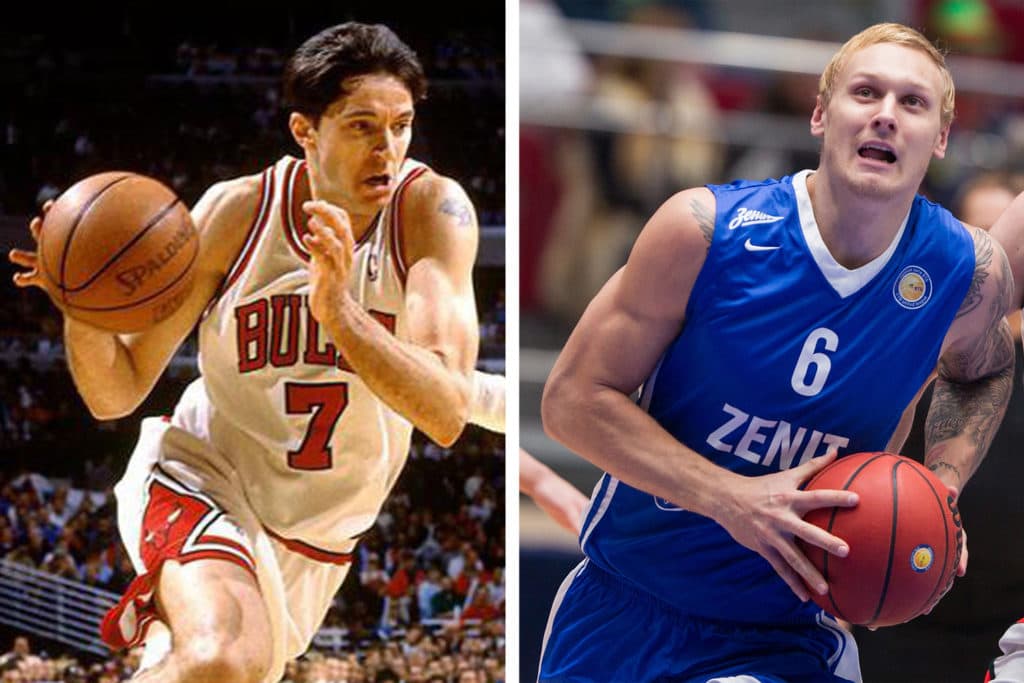
Kukoc was the ideal point-forward long before the position enjoyed the notoriety it does today. Even though there’s not much Kukoc can complain about, one can’t help but wonder if he didn’t get the credit he deserved. Kukoc could play at three, and, under certain circumstances, all five positions. He was unbelievably versatile and would have been a perfect fit in Don Nelson’s system. Given that Zenit’s Vasily Karasev has installed a somewhat similar system of high-tempo, controlled chaos, it’s no surprise the even more athletic Timma thrives in St. Petersburg. We’re not going to speculate on how Timma would have done with the Bulls during Jordan’s era, but it’s not a stretch to say Kukoc makes a good example for Timma to follow.
